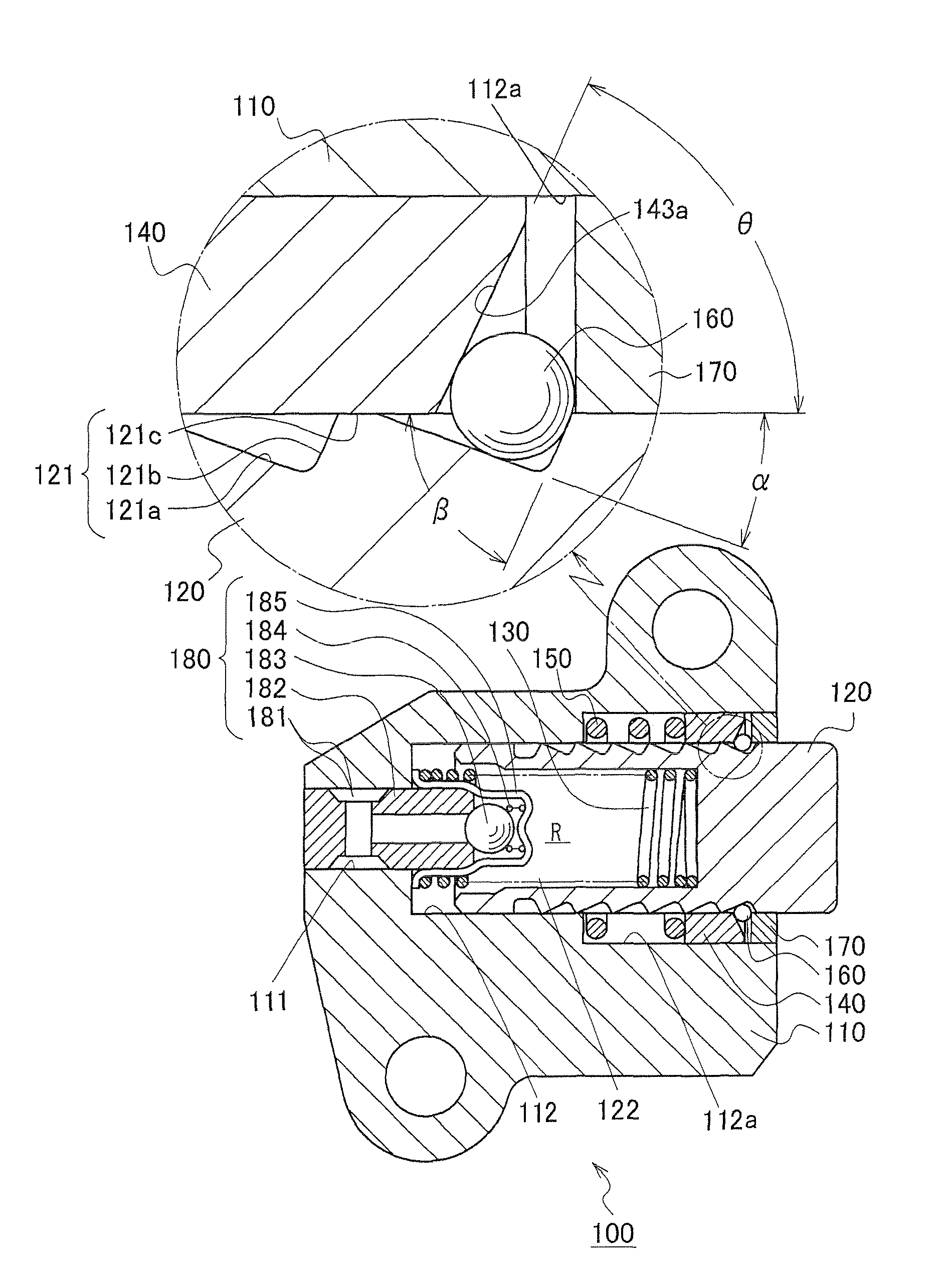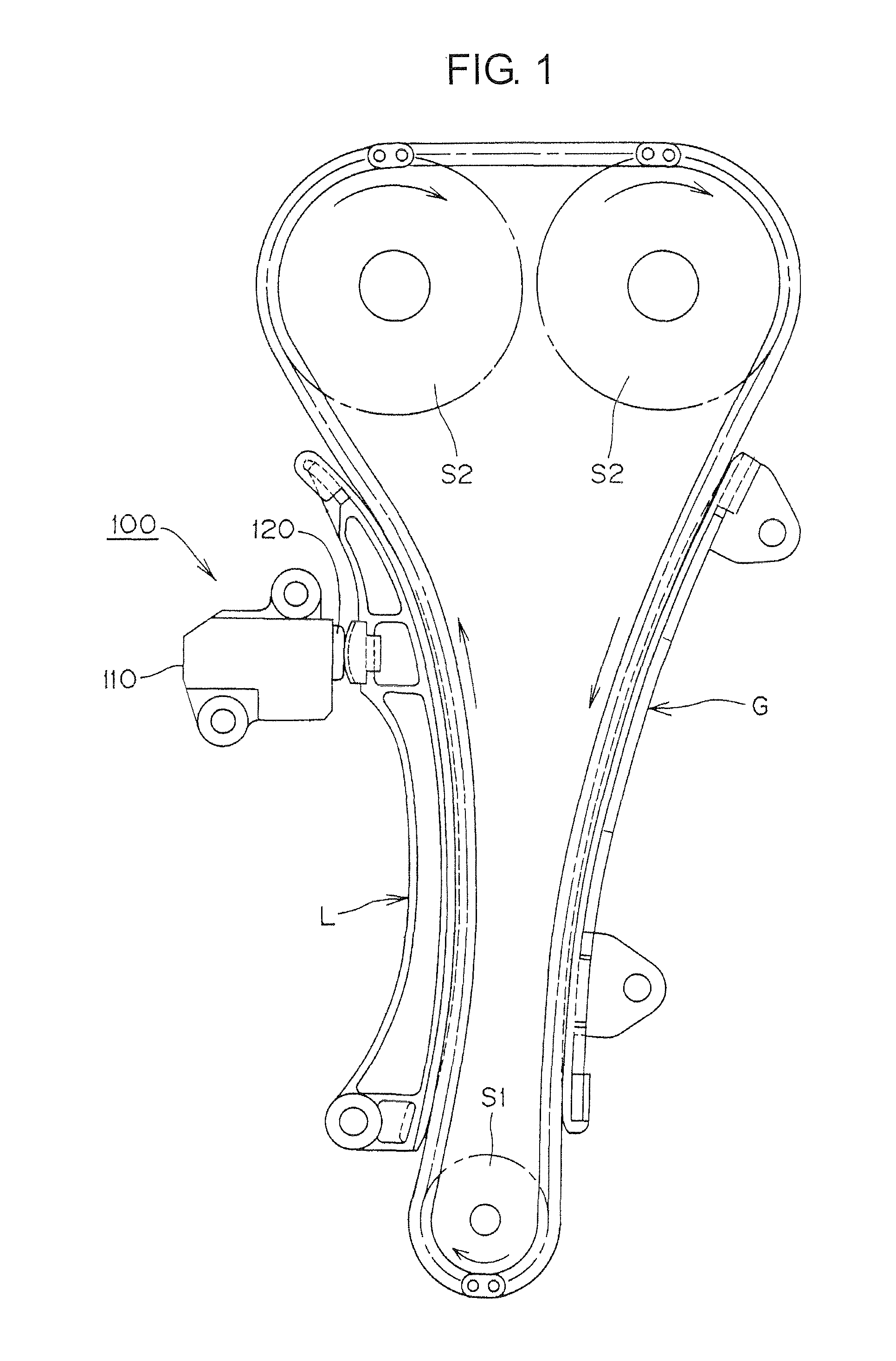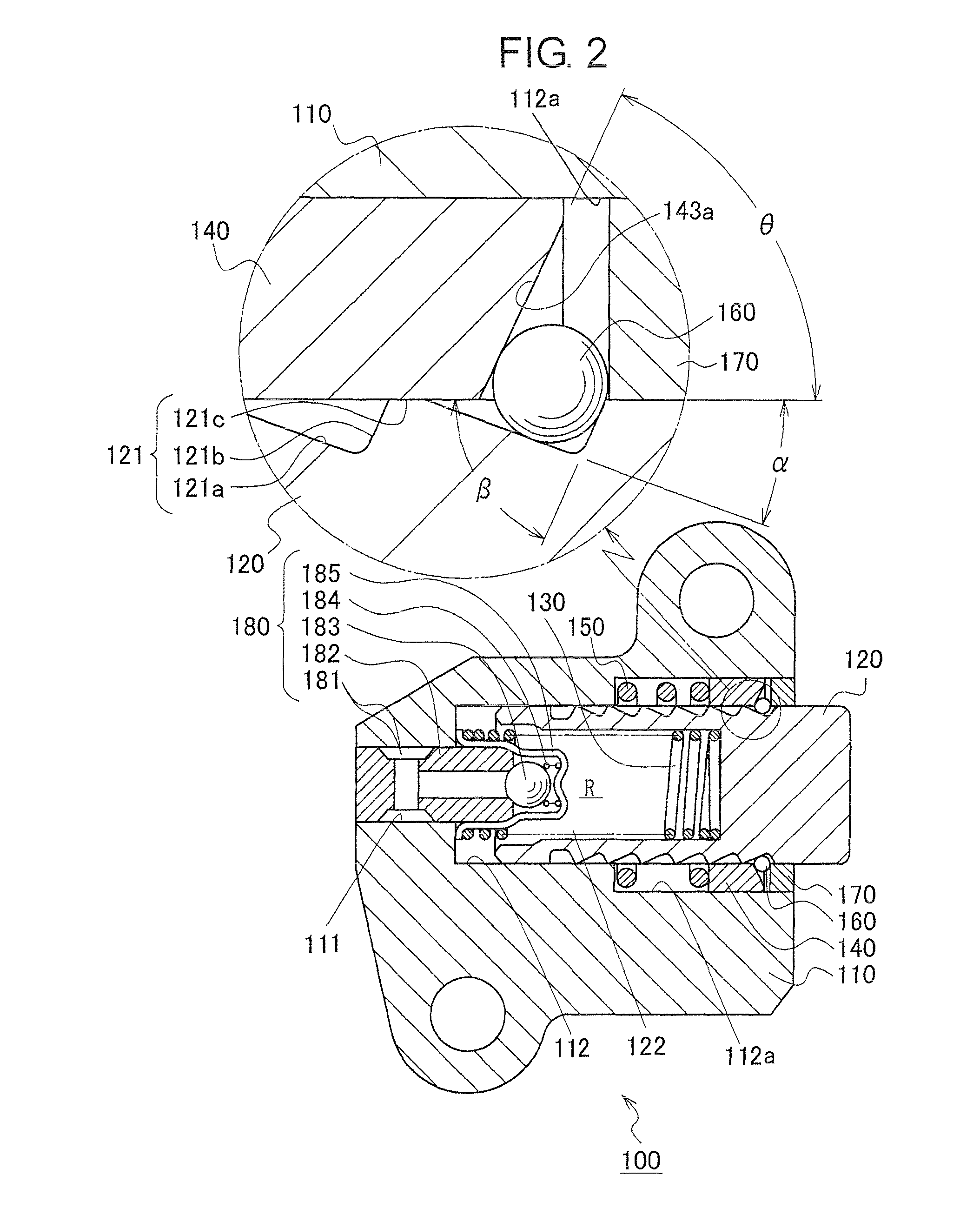Ball-type tensioner
a tensioner and ball-type technology, applied in the direction of belts/chains/gearings, mechanical equipment, etc., can solve the problems of excessive tension in the timing chain over a long time, affecting the performance of the timing chain, so as to reduce the “flip-flop” noise, block the retracting displacement of the plunger, and eliminate the effect of “whirring”
- Summary
- Abstract
- Description
- Claims
- Application Information
AI Technical Summary
Benefits of technology
Problems solved by technology
Method used
Image
Examples
Embodiment Construction
[0030]As shown in FIG. 1, a ball-type tensioner 100, which is mounted on an dual overhead cam (DOHC) internal combustion engine (not shown) is disposed adjacent the slack side of a timing chain C, which is driven by a crankshaft sprocket S1 end in driving relationship camshaft sprockets S2. The protruding plunger 120 of tensioner 100 engages a pivoted lever L, which, in turn, applies tension to the slack-side of the timing chain C.
[0031]A stationary guide G, mounted on the engine, guides the tension side of the timing chain C.
[0032]An arrow on crankshaft sprocket S1 indicates the direction of its rotation. When the crankshaft sprocket rotates, the timing chain C travels in the direction indicated by arrows adjacent the chain, causing the camshaft the sprockets S2 to rotate.
[0033]As shown in FIG. 2, the housing 110 of tensioner 100 has an oil supply passage 111 for introducing oil supplied under pressure through an engine block from an oil pump (not shown). The housing has a plunger-...
PUM
 Login to View More
Login to View More Abstract
Description
Claims
Application Information
 Login to View More
Login to View More - R&D
- Intellectual Property
- Life Sciences
- Materials
- Tech Scout
- Unparalleled Data Quality
- Higher Quality Content
- 60% Fewer Hallucinations
Browse by: Latest US Patents, China's latest patents, Technical Efficacy Thesaurus, Application Domain, Technology Topic, Popular Technical Reports.
© 2025 PatSnap. All rights reserved.Legal|Privacy policy|Modern Slavery Act Transparency Statement|Sitemap|About US| Contact US: help@patsnap.com



